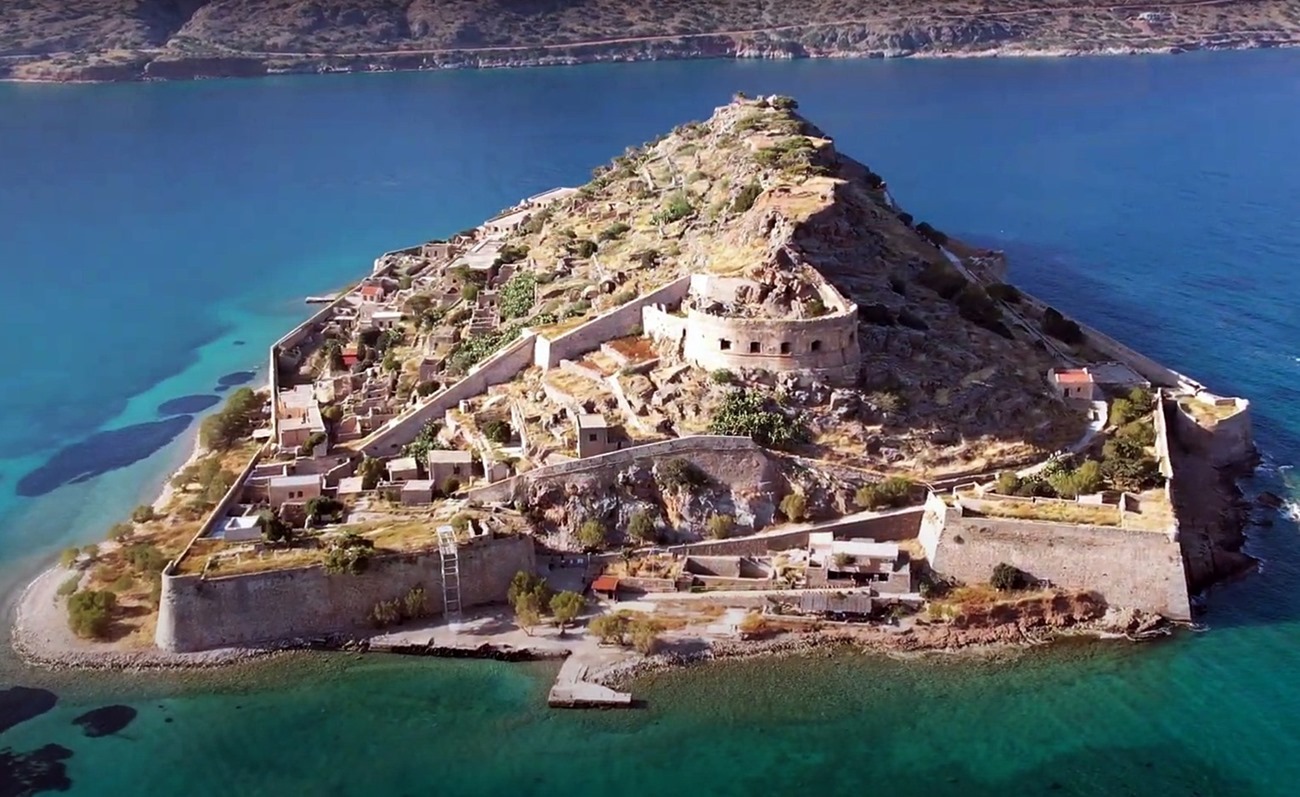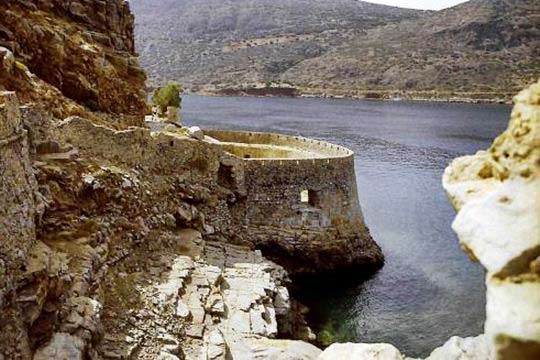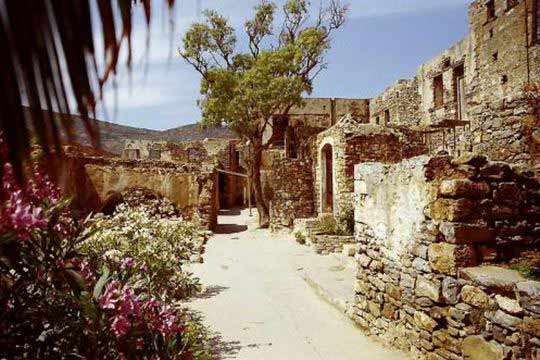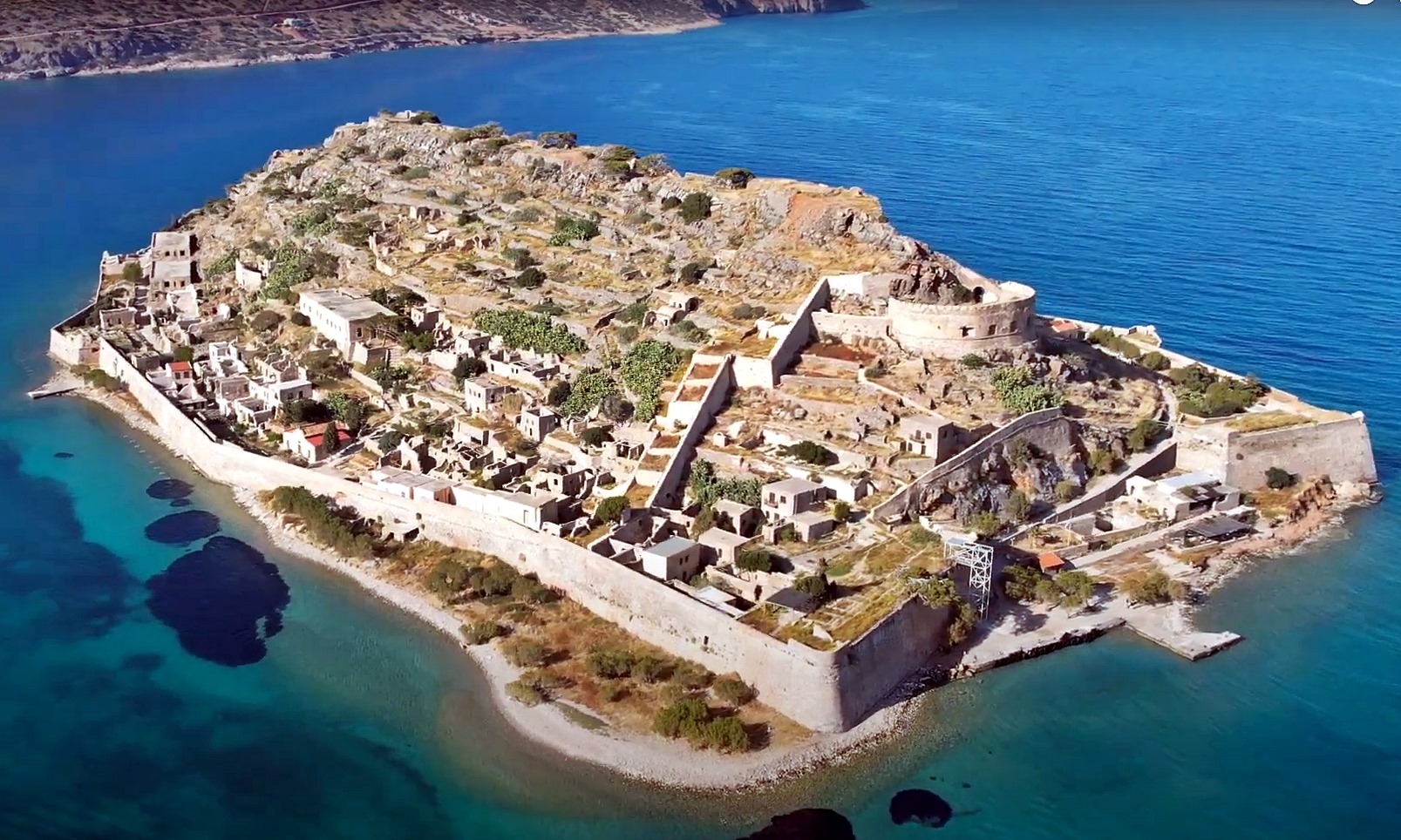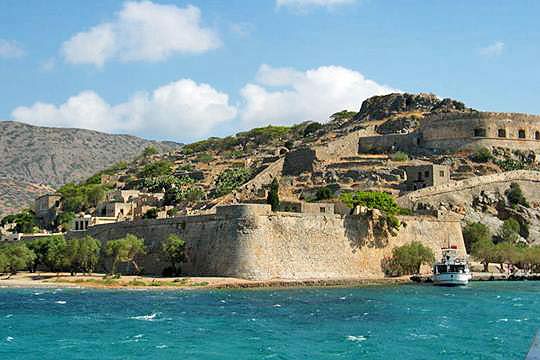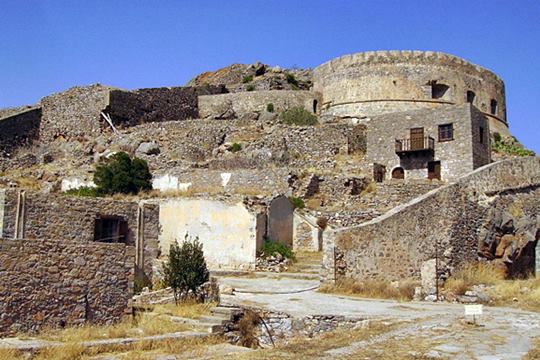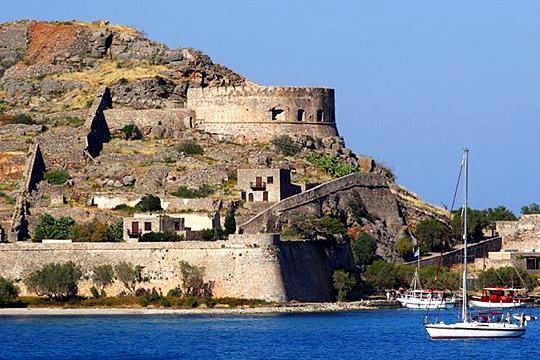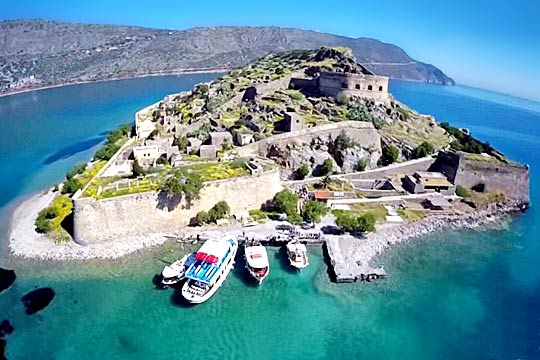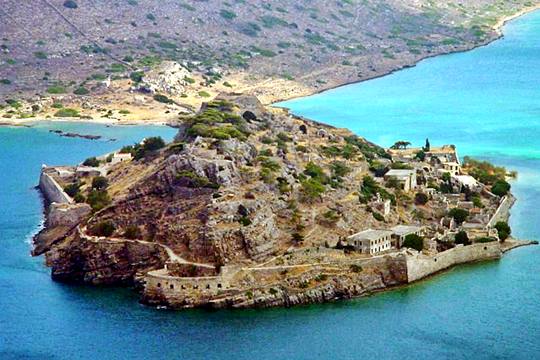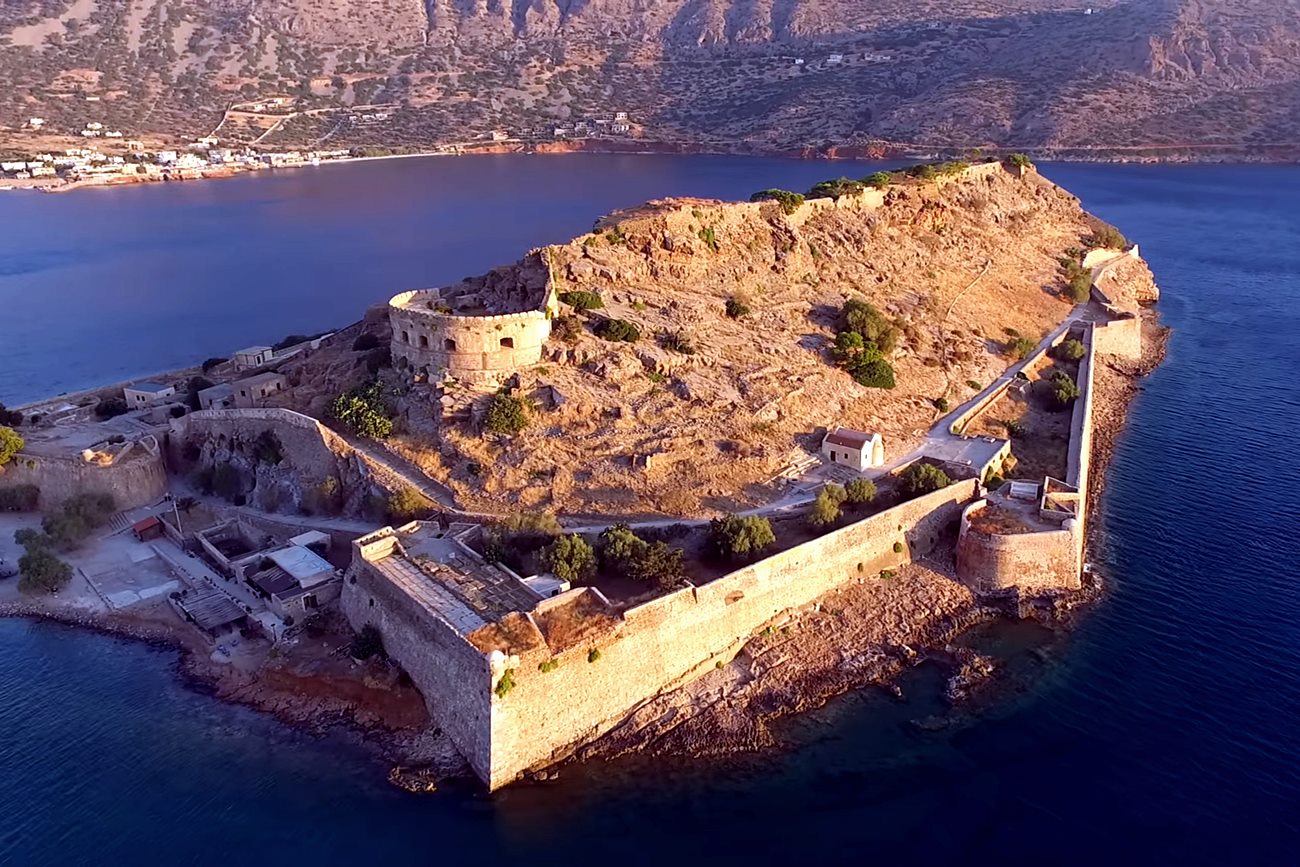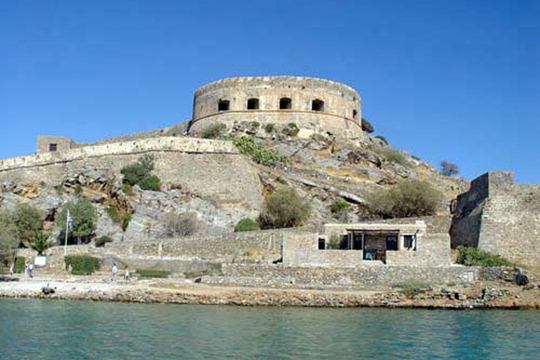Isle Spinalonga, Agios Nicolaos, Lasithi,Crete
Spinalonga
| Location: |
| Spinalonga Island, 2 miles ashore Agios Nicholaos, Crete |
| Region > Prefecture: | 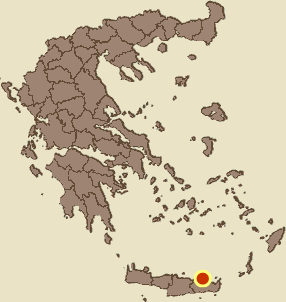 |
| Crete Lasithi | |
| Municipality > Town: | |
| City of Agios Nicolaos • Isle Spinalonga | |
| Altitude: | |
| Zero Altitude |
| Time of Construction | Origin | |
| since 1574 | VENETIAN |
|
| Castle Type | Condition | |
| Coastal Fortress |
Relatively Good
|
The island of Spinalonga (Greek: Σπιναλόγκα) is located in the Gulf of Elounda in north-eastern Crete, in Lasithi, next to the town of Elounda. The Venetians had built on this island one of their strongest fortresses.
Spinalonaga may be the only castle in Greece that its modern history is more interesting : it was used as a leper colony during the first half of the 20th century.
Location & Strategic Scope
The strategic significance of the fortress is obvious: it protects tha bay of Elounda which was important for the Venetian sea trade.
Furthermore, the Venetian cartographer Vincenzo Coronelli claimed that Spinalonga was not always an island, but was once linked with the adjacent peninsula. He reported that in 1526, the Venetians cut down a portion of the peninsula and thus created the island. Because of its position the island was fortified from its earliest years in order to protect the entrance of the port
The Name of the Castle
The name of the island comes from the Latin words "spina" (thorn) and "lunga" (long) and this was maintained by the locals. The Venetians may have been inspired for this expression by the name of an island near Venice called by the same name and which is known today as the island of Giudecca.
According to another story, supported by Venetian documents, the name of the island originated in the Greek expression στην Ελούντα -stin Elounda- (meaning "to Elounda").
History
The first phase of the fortification works on the island lasted from 1579 until 1586.
In 1578, the Venetians charged the engineer Genese Bressani to plan the island's fortifications. He created blockhouses at the highest points of the northern and southern side of the island, as well as a fortification ring along the coast to prevent any hostile disembarkation. In 1579, the Provveditore Generale of Crete, Luca Michiel, put the foundation stone of the fortifications, built over the ruins of an acropolis. In 1584, the Venetians, realising that the coastal fortifications were easy to conquer by the enemies attacking from the nearby hills, decided to strengthen their defence by constructing new fortifications at the top of the hill.
During the Cretan War ((1645–1669) the castle became the refuge of the Greek rebels who used the island as a base for operations against the Turks. While the rest of Crete was occupied by the Ottomans since 1669, Spinalonga, along with Gramvousa and Souda, remained in Venetian hands until 1715, when they fell to the Ottomans during the last Ottoman–Venetian War. These three forts defended Venetian trade routes and were also useful bases in the event of a new Venetian-Turkish war for Crete.
In 1715, the Ottoman Turks captured Spinalonga taking over the last remaining Venetian stronghold and removing the last trace of Venetian military presence from the island of Crete
At the end of the Turkish occupation the island, together with the fort at Ierapetra, was the refuge of many Ottoman families that feared Christian reprisals. After the revolution of 1866, other Ottoman families came to the island from all the region. During the Cretan revolt of 1878, only Spinalonga and the fortress at Ierapetra were not taken by the Christian Cretan insurgents. In 1881 the 1112 Ottomans formed their own community and later, in 1903, the last Turks left the island.
The island was subsequently used as a leper colony from 1903 to 1957. It is notable for being one of the last active leper colonies in Europe. The last inhabitant, a priest, left the island in 1962.
Art & Logo
Spinalonga is featured in the British television series Who Pays the Ferryman? and Werner Herzog's experimental short film Last Words. It is the (unnamed) setting of Ali Smith's short story, The Touching of Wood (in Free Love and Other Stories, 1995). It is also the setting for the 2005 novel The Island by Victoria Hislop, the story of a family's ties to the leper colony; the book was adapted for television by Mega Channel Greece.
The short story "Spinalonga" by John Ware, about a tourist group that visits the island, was included in the 13th Pan Book of Horror.
Tourist Info
Today, the uninhabited island is a popular tourist attraction in Crete. In addition to the abandoned leper colony and the fortress, Spinalonga is known for its small pebble beaches and shallow waters. The island can easily be accessed from Elounda and Agios Nikolaos. Tourist boats depart from both towns on a daily basis. There is no accommodation on Spinalonga, meaning all tours last only a few hours. Boat trips from Elounda take approximately fifteen minutes while trips departing Aghios Nikolaos can take almost an hour.
| First entry in Kastrologos: | July 2012 |
Sources
- Article by Georgia Moschavi in the website ΟΔΥΣΣΕΥΣ - Greek ministry of Culture Σπιναλόγκα (Greek only)
- Wikipedia article - Spinalonga
- Video by the user Sarantos Nikos Spinalonga Crete the island of the lepers - drone video / Σπιναλόγκα το νησί των λεπρών από ψηλά.
- Video by the user vasilis vamvoukakis ΣΠΙΝΑΛΟΓΚΑ ΕΛΟΥΝΤΑ ΚΡΗΤΗΣ ΛΗΨΗ ΜΕ DRONE-SPINALOGA ELUDA CRETE DRONE FOOTAGE
|
|
| Access |
|---|
| Approach to the monument: |
| Easy access by boat from Agios Nicolaos or Elouda or Plaka. |
| Entrance: |
| Ticket entrance. Limited hours. |
| Timeline |
|---|
|
| Other castles around |
|---|
| Vigla of Aforesmenos |
| Tower of Ambela |
| Kornaros Tower |
| Fortification of Oxa |
| Vigla at Yialou Kefali |
| Koules of Vasiliki |



